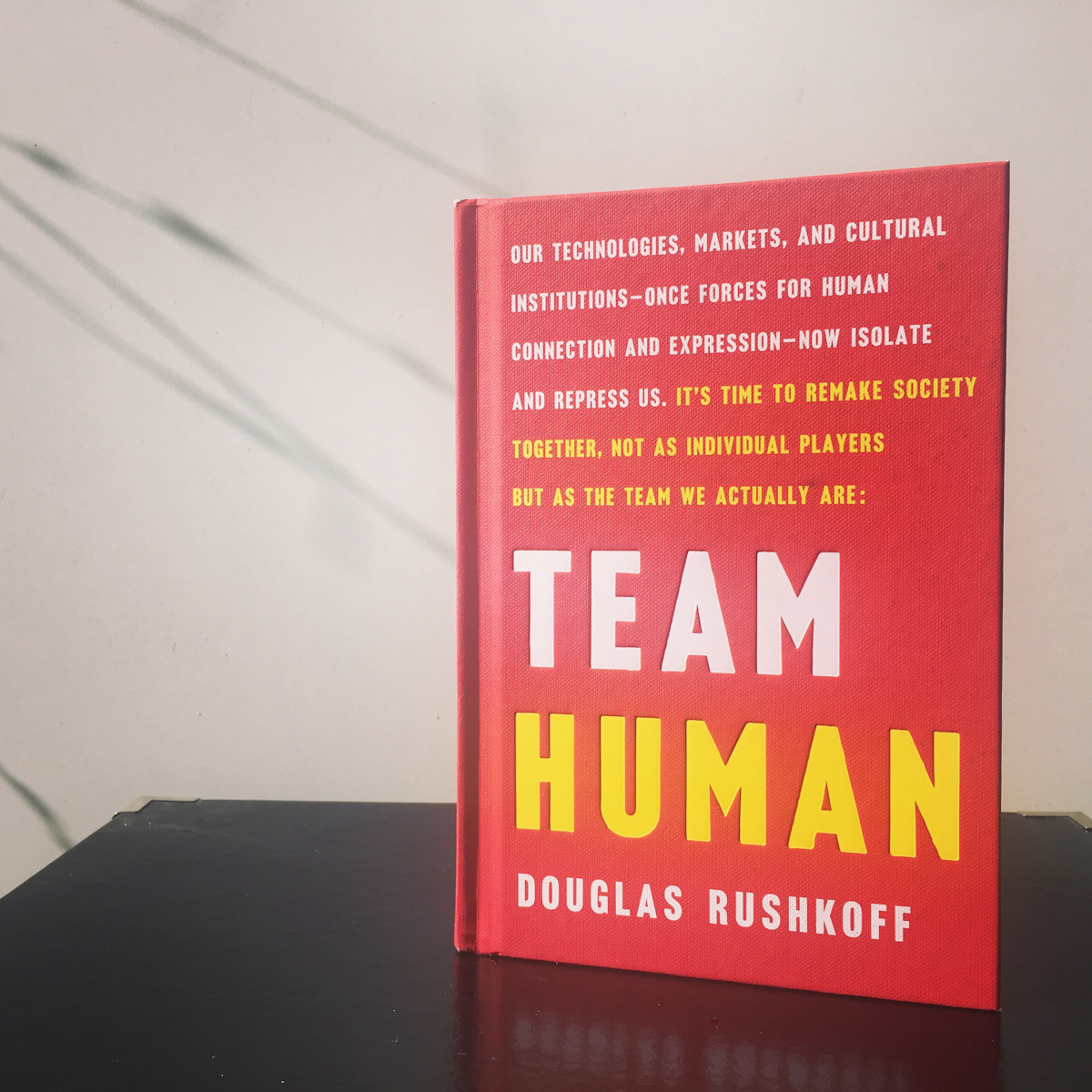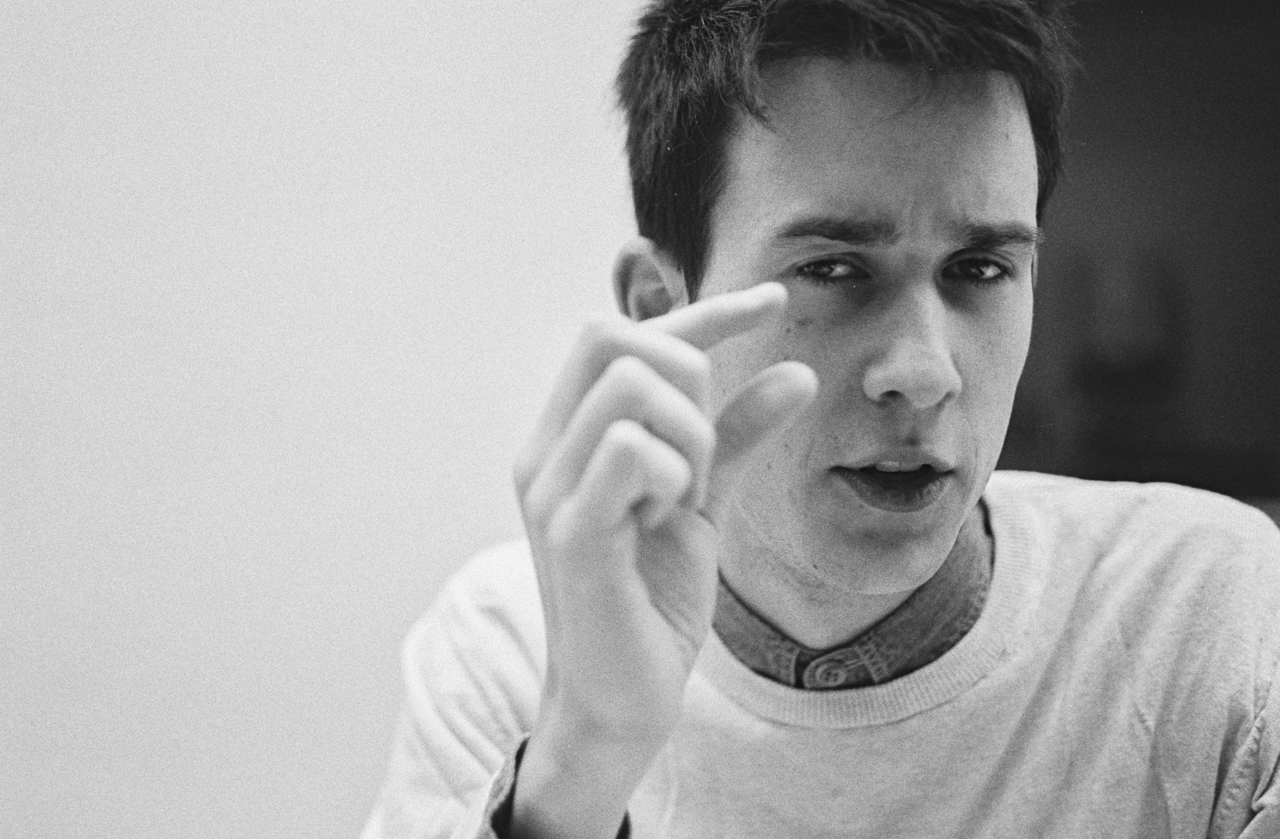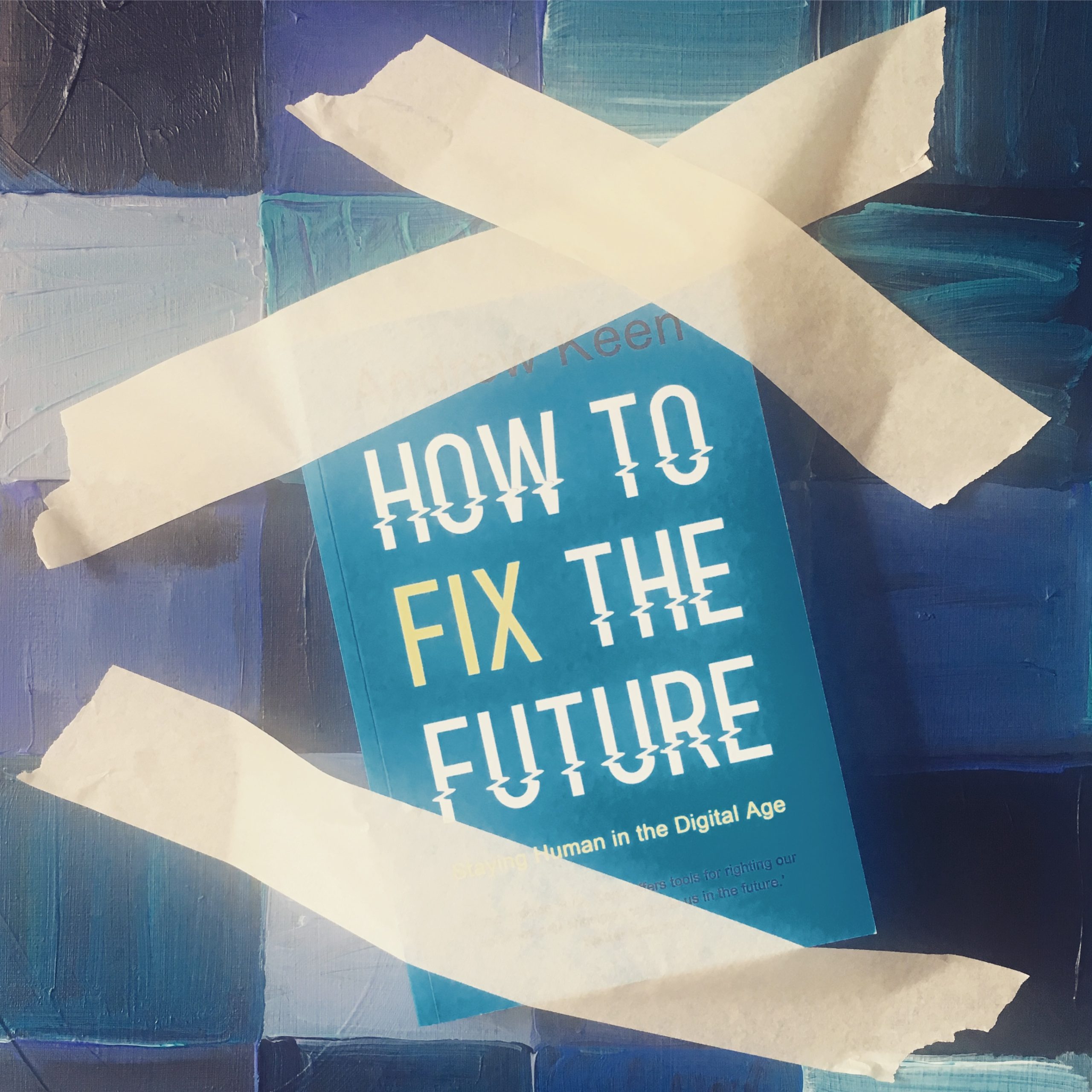In Team Human, Douglas Rushkoff unleashes a manifesto equal parts fiery criticism and humanist faith to remake society before our systems remake—or break—us.
The Creativity and Structure of Pure Mathematics: An Interview with Holly Krieger
American mathematician Dr. Holly Krieger is a lecturer at Britain’s University of Cambridge and Director of Studies and Fellow in Maths at Murray Edwards College, one of the few women-only colleges of Cambridge. She’s also a contributor to the YouTube series Numberphile. She’ll be speaking in Amsterdam at John Adams Institute on October 10 about the beauty of symmetry, one of the most visibly aesthetic principles of math. I spoke with Holly to learn more about the creativity and structure of pure mathematics.
Many people avoid math the same way they avoid the dentist. Tell us how you see it—what attracts you?
I am attracted to a certain formalism and logical structure. The abstraction level I find very appealing, but also, that it’s possible to really understand. One moment, you have no clue what some piece of mathematics is saying or how it’s working, and suddenly there’s like this neurological shift and it clicks into place. Then, not only do you understand it, but it’s almost incomprehensible that you didn’t understand it five seconds ago. And I find that really satisfying.
More broadly, how do you see math’s role in our lives?
Math plays a couple of different roles. The first is direct and practical, and the same reason why history and social sciences are part of a liberal arts education, which is that knowing some mathematics is necessary to have a meaningful voice in a democratic society. Quantitative information informs policy decisions at every level of government, and when an elected official shows you a graph and claims that this graph explains why they need your vote/money/time, it’s important that you’re able to independently estimate the quality of the information they’re giving you.
The second is a broader role, which I’ve heard referred to as “teaching people to think”. Deductive reasoning and abstract thinking – by which I mean considering objects via their relationships instead of their more basic properties – can be taught in various subjects, but mathematics is the only one which distills these skills and teaches them separately from opinions and empirical observations, which are subject to error and not easily generalized to other settings. This is the part that can be really hard to learn, I think. At some point we learn to multiply any given number by 2 without too much trouble, but moving from that to thinking of “multiplication by 2” as a function – a mathematical object in its own right with its own properties – is a significant increase the level of abstraction.
Of course, neither of those roles tend to inspire love! I have intellectual curiosity about many subjects; I am a mathematician for more practical and accidental reasons than love.
You’re in a field of mathematics called arithmetic dynamics. Can you tell us a bit more about that?
Let me tell you about those two words separately first. Arithmetic is the study of the whole numbers, and particularly the prime numbers, which are the building blocks of all whole numbers by using multiplication. Dynamics is the study of how systems defined by simple rules behave in the long term. Arithmetic dynamics is the combination of the two—but let me illustrate by giving you an example of the type of question one could ask in this field. The Fibonacci sequence is a well-known dynamical sequence: the simple rule defining it is to start with 1 and 1, and to get the next number, take the sum of the previous two: 1,1,2,3,5,8, and so on. An arithmetic question one could ask about this dynamical sequence is: are infinitely many Fibonacci numbers prime? We actually don’t know the answer to this question, though it is centuries old.
What makes this arithmetic question interesting—is it fundamentally because we don’t yet know the answer, or would the outcome have some conceptual meaning that could help mathematicians or others?
I have no clue if there would ultimately be some applicability to it, maybe or maybe not. To me, the interestingness of the question is the basicness of it. You could explain the question to a very young child —there’s no technical definitions that need to be expressed, you’re just talking about adding things, and then to talk about primes, you need to understand multiplication. Even if we don’t know of any application to any particular branch of research, it’s such a natural question to ask because in many ways the primes are the building blocks of arithmetic. So, when I say it’s “interesting,” it’s not just because it’s an old question, which it is, but also because it seems so basic yet we can’t answer it.
Dr. Holly Krieger on the Numberphile series
What problem(s) are you currently struggling with? What’s the cutting-edge of the unknown now?
Often more difficult than finding mathematical answers is asking the right mathematical questions! Here is a broad description of something related to my own work that is very exciting in pure mathematics right now, called the principle of unlikely intersections. Roughly, the idea is that arithmetic and geometry should not interact in unexpected ways without good reason.
Think about drawing a graph in a plane, something we do a lot of in school. The points on those graphs have two coordinates, usually called x and y. If I draw a random graph in the plane (a geometric object), there’s no reason to expect that lots of points on the graph will have x and y coordinates which are both rational numbers (fractions of whole numbers, which are arithmetic objects). No reason to expect it… unless, of course, we chose an arithmetically interesting graph, like a line with a rational slope, or a graph where one can show there’s a way to take one rational-coordinate point and getting lots more, like the unit circle.
It’s generally very hard to prove that there are no unlikely intersections (i.e. no interaction of geometry and arithmetic without good reason). I work on a dynamical version of a case of this principle called the André-Oort conjecture, which has seen a lot of attention and dramatic progress lately.
Which gives you more pleasure in math: a problem that you can solve, or a problem that you can’t?
This is such a unique and wonderful question. I wish I could give the romantic answer that an unsolved problem is a sort of blissful intellectual agony to me…but I’m far too practical for that to be true. I like to solve problems! My mathematical personality is more conqueror than explorer, though I could see that changing as I age and broaden my knowledge.
How do modern mathematicians solve problems?
There is quite a lot of sitting and thinking with a notepad or blackboard, for me at least—I think most deeply about mathematics when I’m writing a lot. But for me it tends to be a balance of collaboration and solitary computation; often I’ll discuss potential techniques or interesting questions with my colleagues, then we’ll sit down separately and try to tease out whether any of our grandiose schemes will actually work. It’s very common that something which seems only a small conceptual hurdle in conversation turns out to be a significant technical difficulty once you try to set down rigorous mathematics.
Mathematics is not referred to as an experimental science, but I often find that it is. If I have an idea or question, I’ll nearly always try a simple or easy test case before putting in serious time trying to prove it. That feels a lot like an experiment to me, though fortunately the type that can be done outside an expensive or remote laboratory.
So, despite all our technological advancement, the go-tos are still blackboards and notepads. Are computers capable of this kind of problem solving or is exploring the unknown of mathematics fundamentally a human task?
That’s a question that’s under a lot of debate now. I’m an optimist about progress, so my personal opinion is that yes, there will be a point at which my job can be done by a machine; but that’s not to say that that point will be in my lifetime. If you asked an artist the same question, I think you’d get a lot of objections, but I’d also assert the same answer: at some point in the future, machines will be capable of creating meaningful art. So, I don’t think it’s a fundamentally human pursuit, but that’s because I don’t think creativity is a fundamentally human pursuit.
Considering that computers compute so much better than us, where is it that they fall short in math?
So far, in the realm of mathematical proofs, very short. In particular, they have no idea how to ask an interesting question—at least, what humans would consider an interesting mathematical question. I’m sure to some extent that’s a little bit our difficulty in trying to communicate the axiomatic foundations to work from, but I would say that I’m not aware of any significant progress in terms of computers being able to handle making mathematical arguments. I think they can conduct simple proofs. I would certainly imagine a computer can manage that, if by no other method than exhaustion.
Do you see advanced mathematical problem solving as creative or logical?
It’s both. The creativity is the top-level part of the work. It’s intuition and association and the ability to make connections based on prior experience. It’s about cooking up interesting questions, and noticing patterns, or realizing that something about this feels like something else I’ve thought about, and asking, “Is there some relationship between them?” It’s not until you sit down and crank out the very rigid, logical structure – which can result in beautiful proofs – that the straight forward logic comes in.
You’ve spoken before about the satisfying ‘click’ of solving a problem. Beyond the resolution of a proof or equation, have you seen any real-world integration/implementation of your work that made you especially proud?
I work in pure mathematics, and so far as I know there are no physical applications of my work yet. It tends to be that way in pure math; imaginary numbers were understood as algebraic objects centuries before anyone realized that they were fundamental to trigonometry and physics, for example. Most of the real-world satisfaction I get from my work comes from engaging students and the public with mathematics that is older than, but related to, my own
You’re coming to speak at JAI about the mathematics of symmetry—tell us a bit about that. How should we see symmetry as a mathematical concept?
Symmetry is a particularly great topic for understanding that notion of how mathematics is about abstract reasoning that I mentioned earlier. The mathematical notion of symmetry is invariance under change: can I apply a transformation to this object without changing it? This is an example of moving from the description of the object (round) to a description of its relationship to other things (in this case, itself).
A mathematician might be even more interested in the question: is its collection of symmetries a complete description of a circle? In other words, is it the only curve which can be rotated about any angle and remain the same? That’s a fun question to think about a little bit if you haven’t contemplated it before.
Symmetry is also a concept that is used in deep and abstract mathematics that is nonetheless interesting and accessible to non-mathematicians, as we see it every day in biology, art, and architecture. For me, that makes it particularly interesting to discuss with people who may have neutral or negative perceptions of the appeal of pure mathematics.
How does it compare with other aesthetic / mathematical concepts, for example the golden ratio?
Symmetry is a broader and more abstract concept than something like the golden ratio, which at the end of the day is simply a number like 2 or pi. Those are all numbers with very interesting properties, but in some sense the fact that they’re interesting is due to their properties. The concept of symmetry is something which can be applied to a large class of objects (geometric or otherwise) rather than just numbers.
Don’t get me wrong—thanks to my research interests, I find the golden ratio fascinating! I also like to talk on the notion of approximation by rational numbers, in which the golden ratio plays a really interesting role. But it’s not quite the same level of abstraction as symmetry is.
What do you wish everyone knew about math?
That mathematics can be so valuable for understanding the natural world in depth. Just as learning the historical context of a painting or a novel can significantly and permanently change your perception of and personal attachment to it, learning mathematics changes the way you view nature, art, and music. For example, fractals arise naturally in my work, but they also are seen in nature. It’s thought that certain types of developmental processes (e.g. circulatory formulation), which tend to form fractals called Brownian trees, might form because of a mathematical process known as diffusion-limited aggregation, which is essentially just a description of the shape made by randomly moving particles which like to stick together.
Now, taking a few years to get the necessary background to understand this math is not something I think everyone should spend their time on, obviously! But think instead this way: if you see something that looks branched and cluster-shaped like circulatory systems look, it might be because of the same underlying sticky-particle process. Doesn’t that give you just a little spark of something—of wonder or of depth? That mathematics can give you access to that spark is something I wish more people were taught.
This article was originally published on John Adams Institute.



